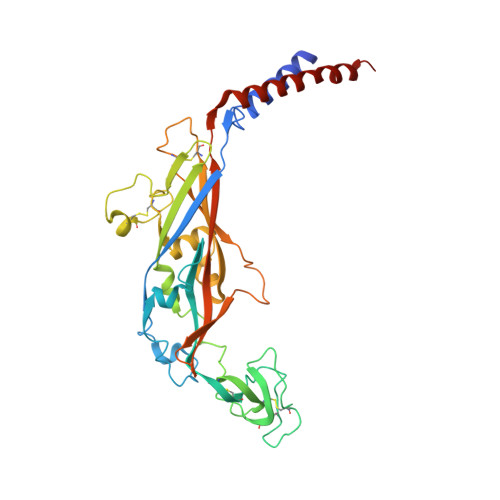Structural Insights into Divalent Cation Modulations of ATP-Gated P2X Receptor Channels
Kasuya, G., Fujiwara, Y., Takemoto, M., Dohmae, N., Nakada-Nakura, Y., Ishitani, R., Hattori, M., Nureki, O.(2016) Cell Rep 14: 932-944
- PubMed: 26804916
- DOI: https://doi.org/10.1016/j.celrep.2015.12.087
- Primary Citation of Related Structures:
5F1C - PubMed Abstract:
P2X receptors are trimeric ATP-gated cation channels involved in physiological processes ranging widely from neurotransmission to pain and taste signal transduction. The modulation of the channel gating, including that by divalent cations, contributes to these diverse physiological functions of P2X receptors. Here, we report the crystal structure of an invertebrate P2X receptor from the Gulf Coast tick Amblyomma maculatum in the presence of ATP and Zn(2+) ion, together with electrophysiological and computational analyses. The structure revealed two distinct metal binding sites, M1 and M2, in the extracellular region. The M1 site, located at the trimer interface, is responsible for Zn(2+) potentiation by facilitating the structural change of the extracellular domain for pore opening. In contrast, the M2 site, coupled with the ATP binding site, might contribute to regulation by Mg(2+). Overall, our work provides structural insights into the divalent cation modulations of P2X receptors.
Organizational Affiliation:
Department of Biological Sciences, Graduate School of Science, The University of Tokyo, 2-11-16 Yayoi, Bunkyo-ku, Tokyo 113-0032, Japan.

















